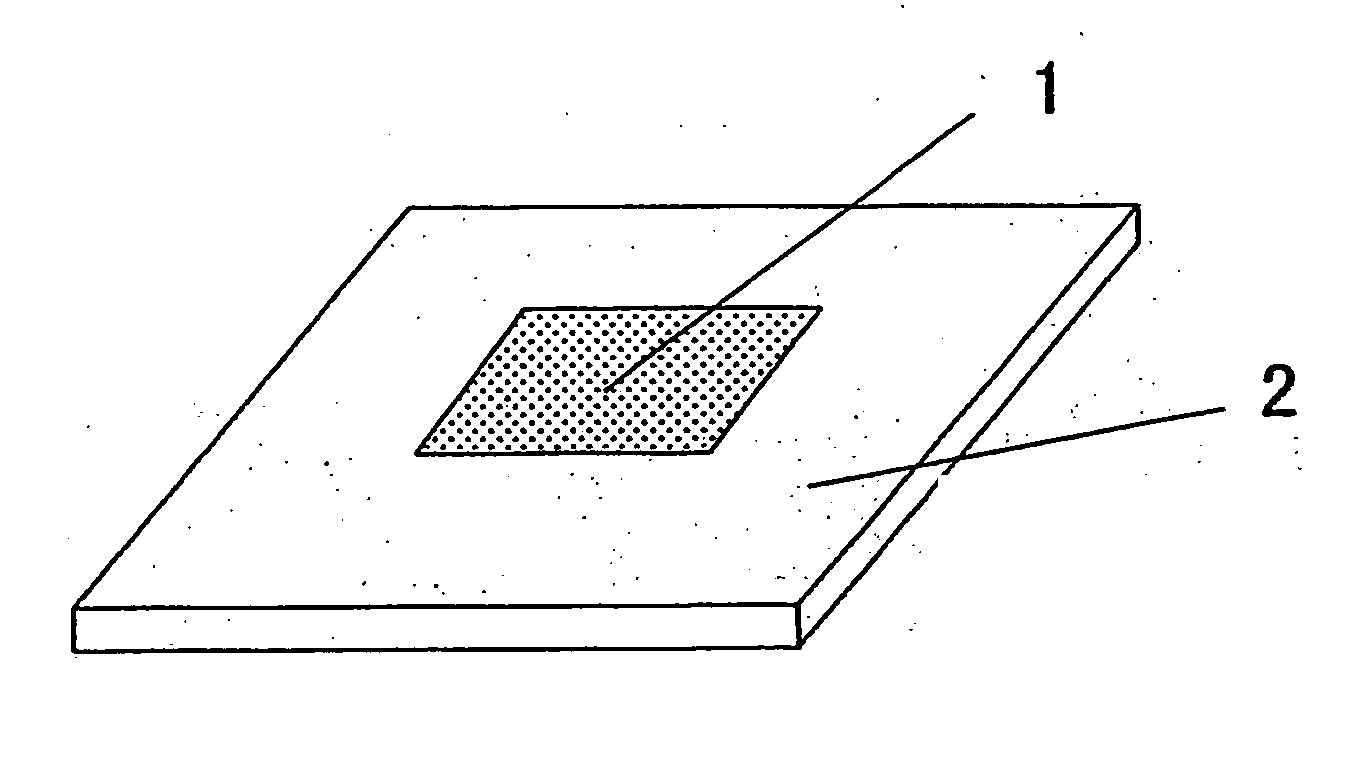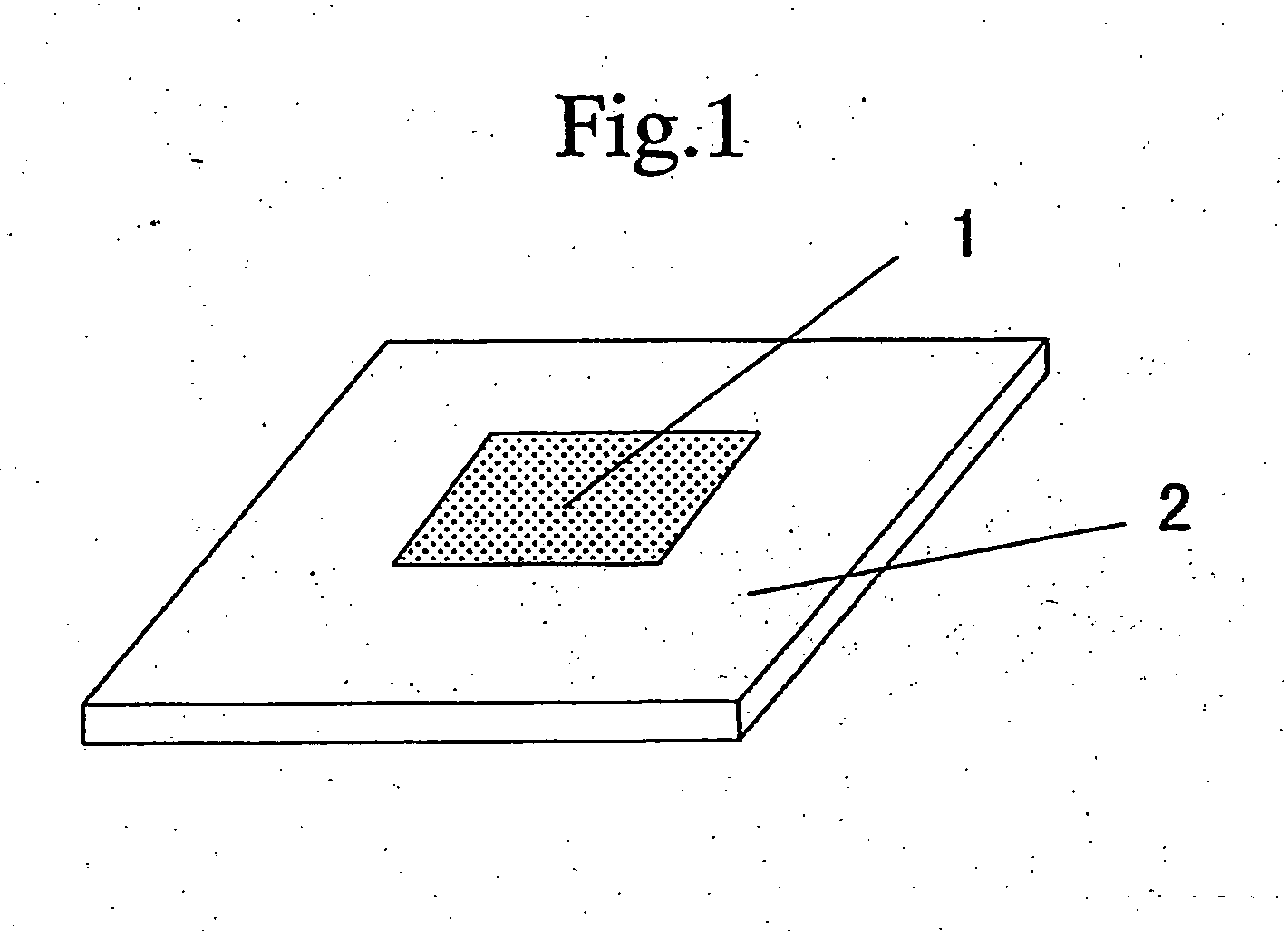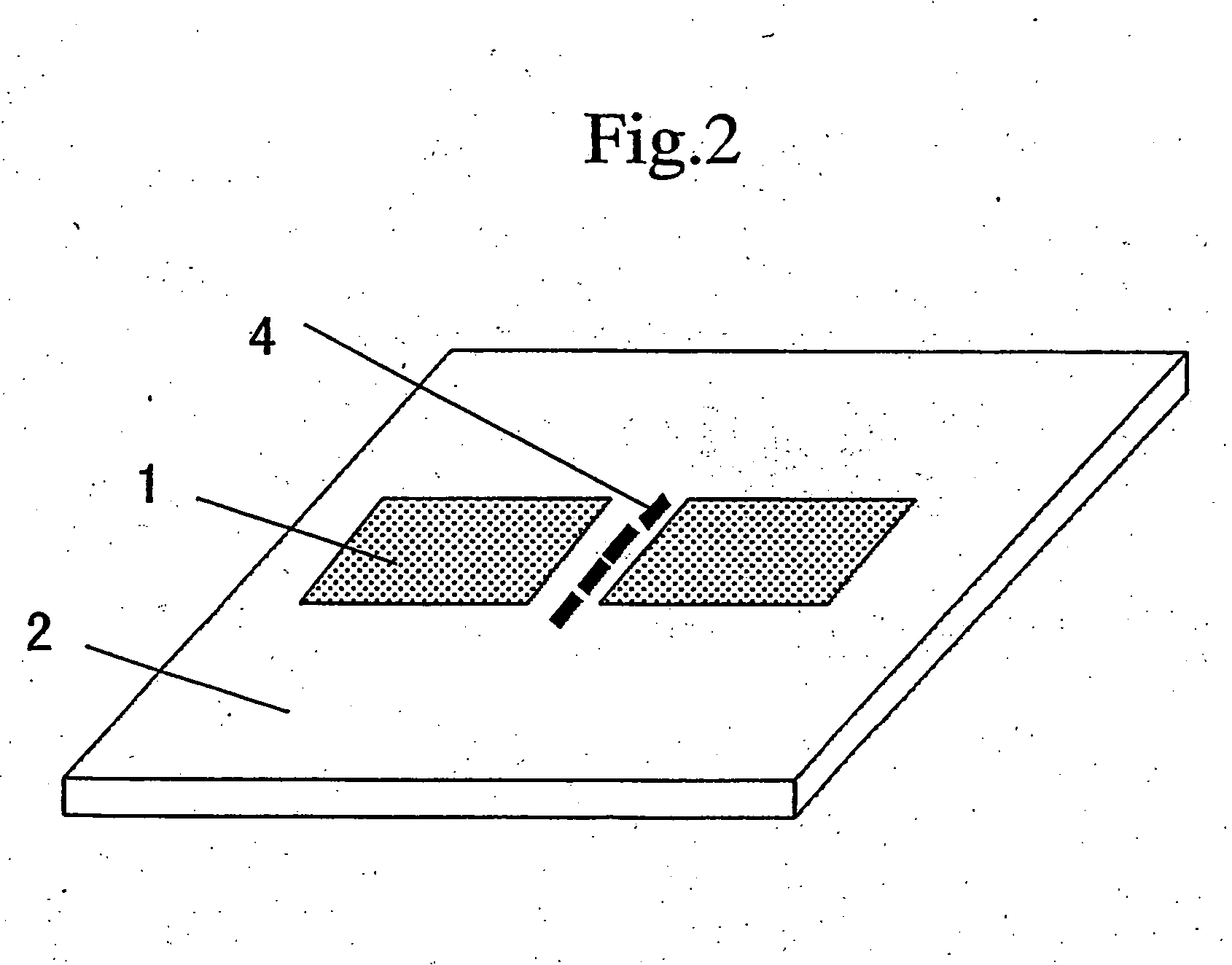Polymer electrolyte as well as polymer electrolyte membrane, membrane electrode assembly and polymer electrolyte fuel cell using the same
a technology of polymer electrolyte and polymer electrolyte, which is applied in the direction of non-aqueous electrolyte cells, non-metal conductors, conductors, etc., can solve the problems of low ratio of the amount of unfreezable water defined in the present specification, insufficient battery output and energy efficiency, and high cost of perfluorinated proton conductive polymers, etc., to achieve easy filling of pores, reduce pressure, and increase efficiency
- Summary
- Abstract
- Description
- Claims
- Application Information
AI Technical Summary
Benefits of technology
Problems solved by technology
Method used
Image
Examples
example 1
[0195] (1) Fabrication of Polymer Electrolyte Membrane
[0196] Sulfonated polyphenylene sulfide sulfone (density of sulfonic acid group: 2 mmol / g) was dissolved in N,N-dimethyl formamide (DMF) so as to gain a yellowish translucent solution having a concentration of 20% (M-A1). A 0.01 N-hydrochloric acid solution was added to 5 g of tetrabutoxy titanium made by Dow Corning Toray Co., Ltd., and was stirred for 30 minutes at room temperature so as to gain a colorless and transparent hydrolysate (M-B1). 10 g of (M-A1) was gathered, into which 0.5 g of (M-B1) was added. This liquid was impregnated to a polyimide base having independent collimated pores which had been fabricated in accordance with a photolithography for 10% of the ratio of the pore area and 12 μm of the diameter of the pores, and the base was heated at 100° C. for 30 minutes so that a polymer electrolyte membrane was fabricated. The thickness of the membrane was 15 μm. This polymer electrolyte was observed with an optical ...
example 2
[0206] A polymer electrolyte membrane and an MEA were fabricated and evaluated in the same manner as in Example 1 except for that a 20% DMF solution of phosphoric acid containing polyimide (density of phosphoric, acid group: 2 mmol / g) was utilized instead of the 20% DMF solution of sulfonated polyphenylene sulfide sulfone, and tetramethoxy silane was utilized instead of tetrabutoxy titanium in Example 1. This polymer electrolyte was observed with an optical microscope and an electron microscope in accordance with the above described method of M2, and as a result, it was found that its phases were substantially uniformly mixed with each other. In addition, this polymer electrolyte was determined in accordance with the above described method of M3, and as a result, was found to include a cross linking polymer. In addition, the insoluble material (cross linking polymer) in the test of M3 did not substantially have proton conductivity. In addition, in accordance with the above described...
example 3
[0207] A polymer electrolyte membrane and an MEA were fabricated and evaluated in the same manner as in Example 1 except for that a 20% DMF solution of sulfonated poly diphenoxy phosphagen (density of sulfonic acid group: 1.5 mmol / g) was utilized instead of the 20% DMF solution of sulfonated polyphenylene sulfide sulfone, and the polyimide base was not utilized in Example 1. This polymer electrolyte was observed with an optical microscope and an electron microscope in accordance with the above, described method of M2, and as a result, it was found that its phases were substantially uniformly mixed with each other. In addition, this polymer electrolyte was determined in accordance with the above described method of M3, and as a result, was found to include a cross linking polymer. In addition, the insoluble material (cross linking polymer) in the test of M3 did not substantially have proton conductivity. In addition, in accordance with the above described method of M1, the ratio of t...
PUM
| Property | Measurement | Unit |
|---|---|---|
| temperature | aaaaa | aaaaa |
| melting point | aaaaa | aaaaa |
| melting point | aaaaa | aaaaa |
Abstract
Description
Claims
Application Information
 Login to View More
Login to View More - R&D
- Intellectual Property
- Life Sciences
- Materials
- Tech Scout
- Unparalleled Data Quality
- Higher Quality Content
- 60% Fewer Hallucinations
Browse by: Latest US Patents, China's latest patents, Technical Efficacy Thesaurus, Application Domain, Technology Topic, Popular Technical Reports.
© 2025 PatSnap. All rights reserved.Legal|Privacy policy|Modern Slavery Act Transparency Statement|Sitemap|About US| Contact US: help@patsnap.com



